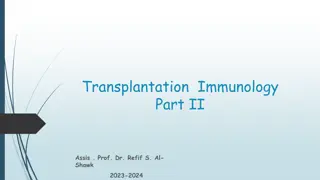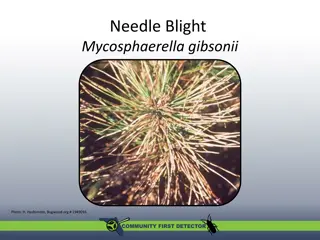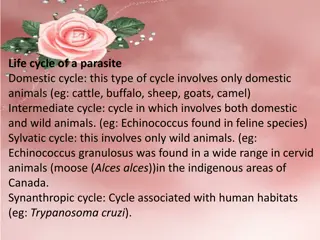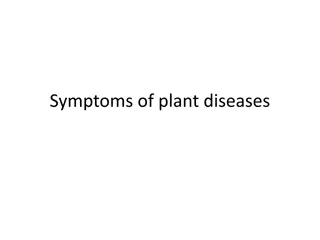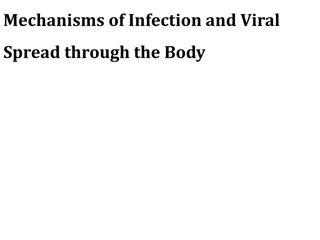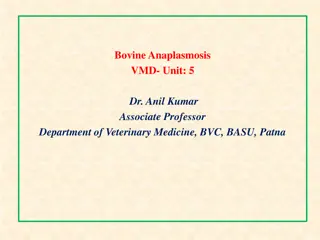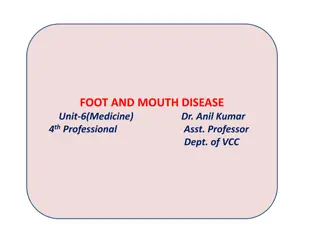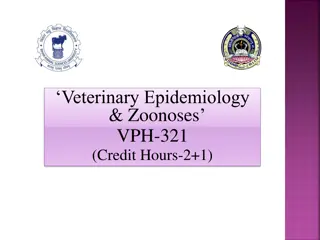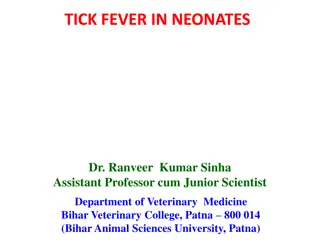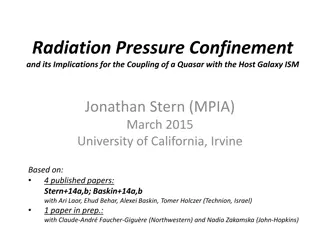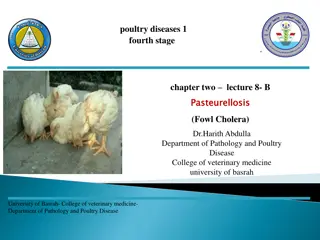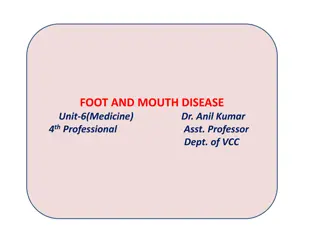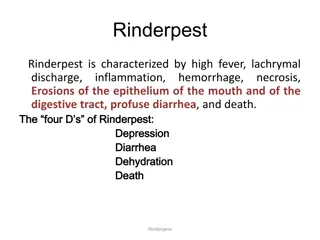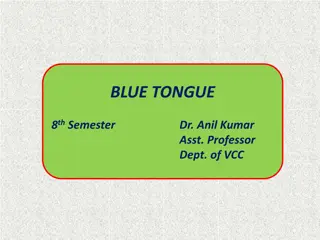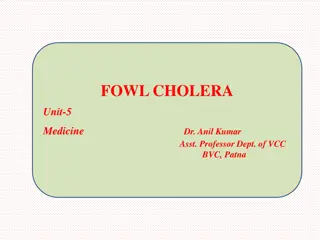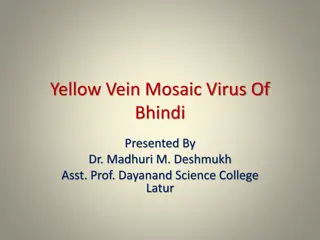Understanding Graft-Versus-Host Disease (GVHD) and Its Symptoms
Graft-versus-host disease (GVHD) is a potential complication following stem cell or bone marrow transplants, where donor cells attack the recipient's body. GVHD can occur in acute or chronic forms, presenting symptoms such as abdominal issues, skin rash, dryness, joint pain, and more. This autoimmune response is more likely when donor-recipient relatedness is lower. Treatment involves managing symptoms and may require immunosuppressive therapy.
Download Presentation

Please find below an Image/Link to download the presentation.
The content on the website is provided AS IS for your information and personal use only. It may not be sold, licensed, or shared on other websites without obtaining consent from the author. Download presentation by click this link. If you encounter any issues during the download, it is possible that the publisher has removed the file from their server.
E N D
Presentation Transcript
Graft-versus-host disease (GVHD) is a complication that can occur after certain stem cell or bone marrow transplants. Causes GVHD may occur after a bone marrow, or stem cell, transplant in which someone receives bone marrow tissue or cells from a donor. This type of transplant is called allogeneic. The new, transplanted cells regard the recipient's body as foreign. When this happens, the cells attack the recipient's body. GVHD does not occur when people receive their own cells. This type of transplant is called autologous. Before a transplant, tissue and cells from possible donors are checked to see how closely they match the recipient. GVHD is less likely to occur, or symptoms will be milder, when the match is close. The chance of GVHD is: Around 30% to 40% when the donor and recipient are related Around 60% to 80% when the donor and recipient are not related Symptoms There are 2 types of GVHD: acute and chronic. Symptoms in both acute and chronic GVHD range from mild to severe. Acute GVHD usually happens within the first 6 months after a transplant. Common acute symptoms include: Abdominal pain or cramps, nausea, vomiting, and diarrhea Jaundice (yellow coloring of the skin or eyes) or other liver problems Skin rash, itching, redness on areas of the skin Chronic GVHD usually starts more than 3 months after a transplant, and can last a lifetime. Chronic symptoms may include: Dry eyes or vision changes
Dry mouth, white patches inside the mouth, and sensitivity to spicy foods Fatigue, muscle weakness, and chronic pain Joint pain or stiffness Skin rash with raised, discolored areas, as well as skin tightening or thickening Shortness of breath due to lung damage Vaginal dryness Weight loss Graft-versus-host disease (GvHD) is a medical complication following the receipt of transplanted tissue from a genetically different person. GvHD is commonly associated with stem cell transplant (bone marrow transplant), but the term also applies to other forms of tissue graft. Immune cells (white blood cells) in the donated tissue (the graft) recognize the recipient (the host) as foreign (nonself). The transplanted immune cells then attack the host's body cells. GvHD can also occur after a blood transfusion if the blood products used have not been irradiated or treated with an approved pathogen reduction system. Whereas transplant rejection occurs when the host rejects the graft, GvHD occurs when the graft rejects the host. The underlying principle (alloimmunity) is the same, but the details and course may differ. Signs and symptoms: In the classical sense, acute graft-versus-host-disease is characterized by selective damage to the liver, skin (rash), mucosa, and the gastrointestinal tract. Newer research indicates that other graft-versus-host-disease target organs include the immune system (the hematopoietic system, e.g., the bone marrow and the thymus) itself, and the lungs in the form of immune-
mediated pneumonitis. Biomarkers can be used to identify specific causes of GvHD, such as elafin in the skin.[Chronic graft-versus-host-disease also attacks the above organs, but over its long-term course can also cause damage to the connective tissue and exocrine glands. Acute GvHD of the GI tract can result in severe intestinal inflammation, sloughing of the mucosal membrane, severe diarrhea, abdominal pain, nausea, and vomiting. This is typically diagnosed via intestinal biopsy. Liver GvHD is measured by the bilirubin level in acute patients. Skin GvHD results in a diffuse red maculopapular rash, sometimes in a lacy pattern. Mucosal damage to the vagina can result in severe pain and scarring, and appears in both acute and chronic GvHD. This can result in an inability to have sexual intercourse. Acute GvHD is staged as follows: overall grade (skin-liver-gut) with each organ staged individually from a low of 1 to a high of 4. Patients with grade IV GvHD usually have a poor prognosis. If the GvHD is severe and requires intense immunosuppression involving steroids and additional agents to get under control, the patient may develop severe infections as a result of the immunosuppression and may die of infection. In the oral cavity, chronic graft-versus-host-disease manifests as lichen planus with a higher risk of malignant transformation to oral squamous cell carcinoma in comparison to the classical oral lichen planus. Graft- versus-host-disease-associated oral cancer may have more aggressive behavior with poorer prognosis, when compared to oral cancer in non-hematopoietic stem cell transplantation patients. Types In the clinical setting, graft-versus-host-disease is divided into acute and chronic forms, and scored or graded on the basis of the tissue affected and the severity of the reaction. The acute or fulminant form of the disease (aGvHD) is normally observed within the first 100 days post- transplant,[6]and is a major challenge to transplants owing to associated morbidity and mortality.
The chronic form of graft-versus-host-disease (cGvHD) normally occurs after 100 days. The appearance of moderate to severe cases of cGVHD adversely influences long-term survival. Causes https://upload.wikimedia.org/wikipedia/commons/thumb/1/1c/Three_phases_of_GVHD_immuno-biology.jpg/220px-Three_phases_of_GVHD_immuno-biology.jpg Criteria: 3 criteria must be met in order for GvHD to occur. An immuno-competent graft is administered, with viable and functional immune cells. The recipient is immunologically different from the donor - histo-incompatible. The recipient is immuno-compromised and therefore cannot destroy or inactivate the transplanted cells. After bone marrow transplantation, T cells present in the graft, either as contaminants or intentionally introduced into the host, attack the tissues of the transplant recipient after perceiving host tissues as antigenically foreign. The T cells produce an excess of cytokines, including TNF- and interferon-gamma (IFN ). A wide range of host antigens can initiate graft-versus-host-disease, among them the human leukocyte antigens (HLA). However, graft-versus-host disease can occur even when HLA-identical siblings are the donors. HLA-identical siblings or HLA-identical unrelated donors often have genetically different proteins (called minor histocompatibility antigens) that can be presented by Major histocompatibility complex (MHC) molecules to the donor's T-cells, which see these antigens as foreign and so mount an immune response.
Antigens most responsible for graft loss are HLA-DR (first six months), HLA-B (first two years), and HLA-A (long-term survival). While donor T-cells are undesirable as effector cells of graft-versus-host-disease, they are valuable for engraftment by preventing the recipient's residual immune system from rejecting the bone marrow graft (host-versus-graft). In addition, as bone marrow transplantation is frequently used to treat cancer, mainly leukemias, donor T-cells have proven to have a valuable graft-versus-tumor effect. A great deal of current research on allogeneic bone marrow transplantation involves attempts to separate the undesirable graft-vs-host-disease aspects of T-cell physiology from the desirable graft-versus-tumor effect. Transfusion-associated GvHD Main article: Transfusion-associated graft versus host disease This type of GvHD is associated with transfusion of un-irradiated blood to immunocompromised recipients. It can also occur in situations in which the blood donor is homozygous and the recipient is heterozygous for an HLA haplotype. It is associated with higher mortality (80-90%) due to involvement of bone marrow lymphoid tissue, however the clinical manifestations are similar to GVHD resulting from bone marrow transplantation. Transfusion-associated GvHD is rare in modern medicine. It is almost entirely preventable by controlled irradiation of blood products to inactivate the white blood cells (including lymphocytes) within. Thymus transplantation Thymus transplantation may be said to be able to cause a special type of GvHD because the recipient's thymocytes would use the donor thymus cells as models when going through the negative selection to recognize self-antigens, and could therefore still mistake own structures in the rest of the body for being non-self. This is a rather indirect GvHD because it is not directly cells in the graft itself that causes it but cells in the graft that make the recipient's T cells act like
donor in xenotransplantation experiments of the thymus between different species. Autoimmune disease is a frequent complication after human allogeneic thymus transplantation, found in 42% of subjects over 1 year post transplantation. However, this is partially explained by the fact that the indication itself, that is, complete DiGeorge syndrome, increases the risk of autoimmune disease. Prevention DNA-based tissue typing allows for more precise HLA matching between donors and transplant patients, which has been proven to reduce the incidence and severity of GvHD and to increase long-term survival. The T-cells of umbilical cord blood (UCB) have an inherent immunological immaturity, and the use of UCB stem cells in unrelated donor transplants has a reduced incidence and severity of GVHD. The use of liver-derived hematopoietic stem cells to reconstitute bone marrow has the highest success rate according to recent studies. Methotrexate, cyclosporin and tacrolimus are common drugs used for GVHD prophylaxis. Graft-versus-host-disease can largely be avoided by performing a T-cell-depleted bone marrow transplant. However, these types of transplants come at a cost of diminished graft- versus-tumor effect, greater risk of engraftment failure, or cancer relapse, and general immunodeficiency, resulting in a patient more susceptible to viral, bacterial, and fungal infection. In a multi-center study, disease-free survival at 3 years was not different between T cell-depleted and T cell-replete transplants. T cells. It can be seen as a multiple-organ autoimmunity
Treatment Intravenously administered glucocorticoids, such as prednisone, are the standard of care in acute GvHDand chronic GVHD.The use of these glucocorticoids is designed to suppress the T-cell-mediated immune onslaught on the host tissues; however, in high doses, this immune- suppression raises the risk of infections and cancer relapse. Therefore, it is desirable to taper off the post-transplant high-level steroid doses to lower levels, at which point the appearance of mild GVHD may be welcome, especially in HLA mis-matched patients, as it is typically associated with a graft-versus-tumor effect.


